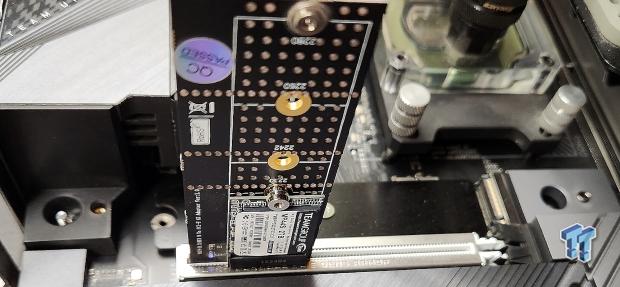
The Bottom Line
Pros
- + 2230
- + Capacity
- + Single sided
Cons
- - None
Should you buy it?
AvoidConsiderShortlistBuyIntroduction & Drive Details
With the rise of handheld gaming devices like the ROG Ally and Steam Deck, we've seen a whole host of 2230 M.2 SSDs designed specifically for these devices as a means of fast storage expansion. First came the 1TB variants, and now we are seeing a wave of 2TB variants coming down the pike.
As we see it, if you are going to go to the trouble of upgrading the onboard storage of these handheld gaming devices it's something you will only want to do once, so why not make it 2TB instead of 1TB? Sure, it costs twice as much to go 2TB, but as we see it, 2TB is the current sweet spot capacity point for gaming duties.
TeamGroup has designed its new 2TB MP44S 2230 SSD with this in mind. This diminutive drive is an elegant single-sided DRAMless design, controlled by Phison's class-leading E21T controller and arrayed with a single 2TB package of Micron 176-Layer N48R QLC flash. At first thought, QLC flash might not engender any excitement as it is typically inferior to TLC on the performance front.
However, as we've come to find from years of testing Micron 176L flash, at least when a 4-channel DRAMless controller is involved, TLC doesn't offer any tangible performance benefit over QLC. This is due to the fact that Micron 176L TLC is 2-word line flash, but its QLC variant is 4-word line flash. In fact, our experience has been that N48R can outperform B47R under the right conditions.
So, we are not disappointed in the least to see the MP44S arrayed with N48R as it will deliver as good or maybe even better than B47R behind an E21T controller. We can compare this for ourselves almost directly with TeamGroup's own MP44L, which is a full-size 2280 E21T/B47R SSD. We say almost directly as 2230 SSDs are tuned down some in comparison with full-sized SSDs because heat is much more of an issue for 2230 SSDs.
Drive Details
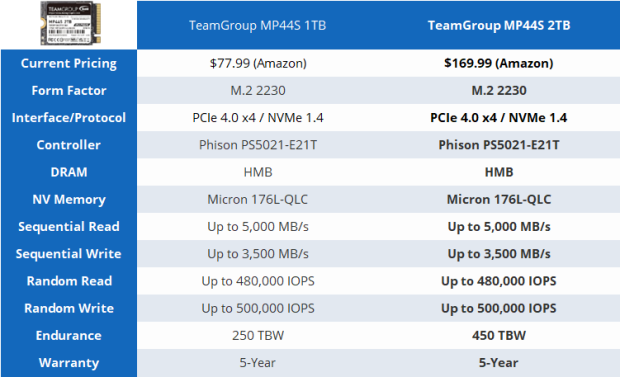
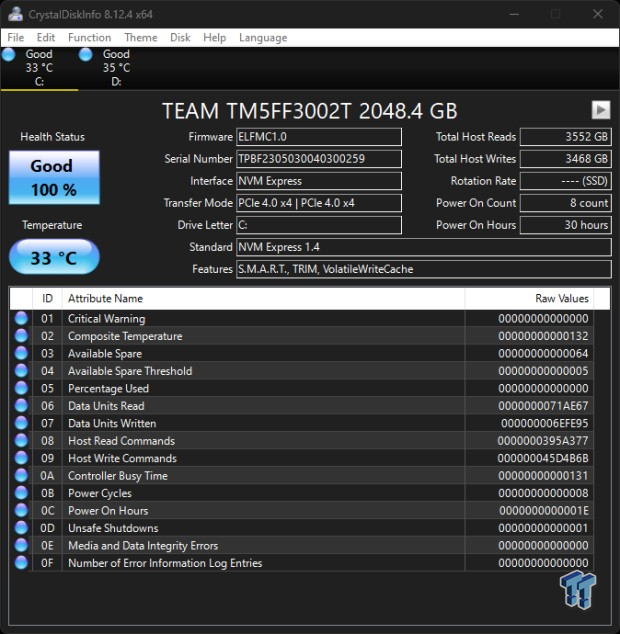
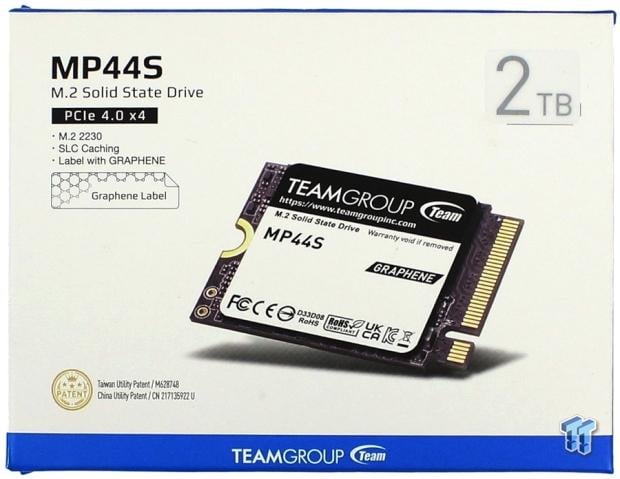
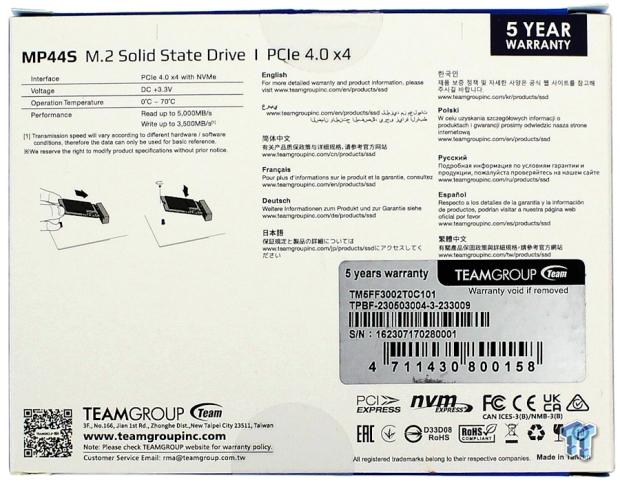
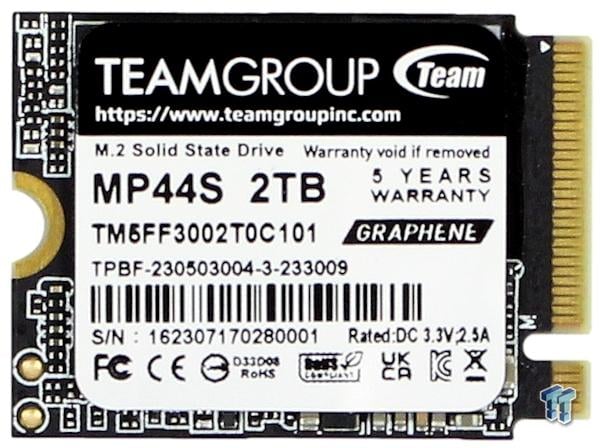
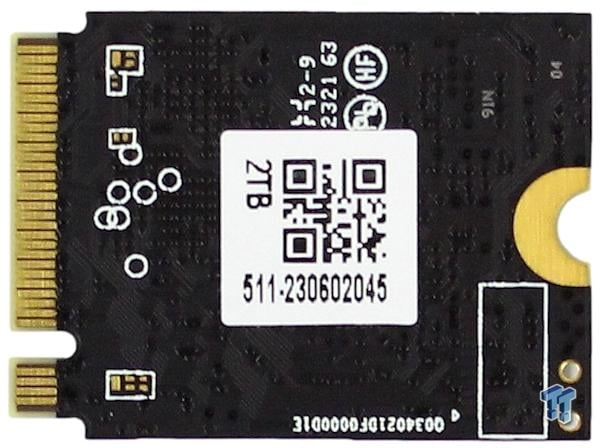
TeamGroup does offer an SSD tool called SSD S.M.A.R.T TOOL that some might find useful. Get it HERE. The software can be used to grab SMART data, and the application also includes a built-in disk benchmark.
Jon's Test System Specifications
Intel Test System
- Motherboard: GIGABYTE AORUS Z790 Xtreme X
- CPU: Intel Core i9-14900K - Buy from Amazon
- Cooler: Alphacool Eissturm Hurricane Copper 45 - Buy from Amazon
- RAM: Patriot Viper Xtreme 5 8000 48GB - Buy from Amazon
- Graphics Card: MSI SUPRIM X RTX 3080 12GB - Buy from Amazon
- Case: PrimoChill's Praxis Wetbench - Buy from Amazon
- Power Supply: be quiet! Dark Power Pro 12 1200W - Buy from Amazon
- OS: Microsoft Windows 11 Pro 64-bit - Buy from Amazon
AMD Test System
- Motherboard: GIGABYTE X670E AORUS Master
- CPU: AMD Ryzen 9 7950X - Buy from Amazon
- Cooler: Alphacool Eissturm Hurricane Copper 45 - Buy from Amazon
- RAM: Sabrent Rocket DDR5 32GB - Buy from Amazon
- Graphics Card: MSI SUPRIM X RTX 3080 12GB - Buy from Amazon
- Case: PrimoChill's Praxis Wetbench - Buy from Amazon
- Power Supply: be quiet! Dark Power Pro 12 1200W - Buy from Amazon
- OS: Microsoft Windows 11 Pro 64-bit - Buy from Amazon
Because we at TweakTown like to be first at everything whenever we can, we will present our storage performance results for the test subject on both 14th Gen Intel and 7000 Series AMD platforms going forward for the foreseeable future. Because Intel still delivers the best real-world storage performance, (Look Here), our running chart will continue to be Intel-based until AMD can deliver better real-world storage performance than its rival.

Synthetic Benchmarks: CDM, Anvil, ATTO
CrystalDiskMark
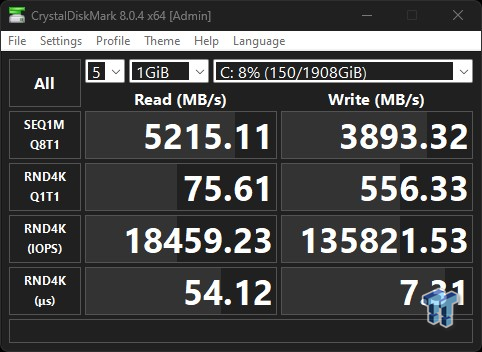

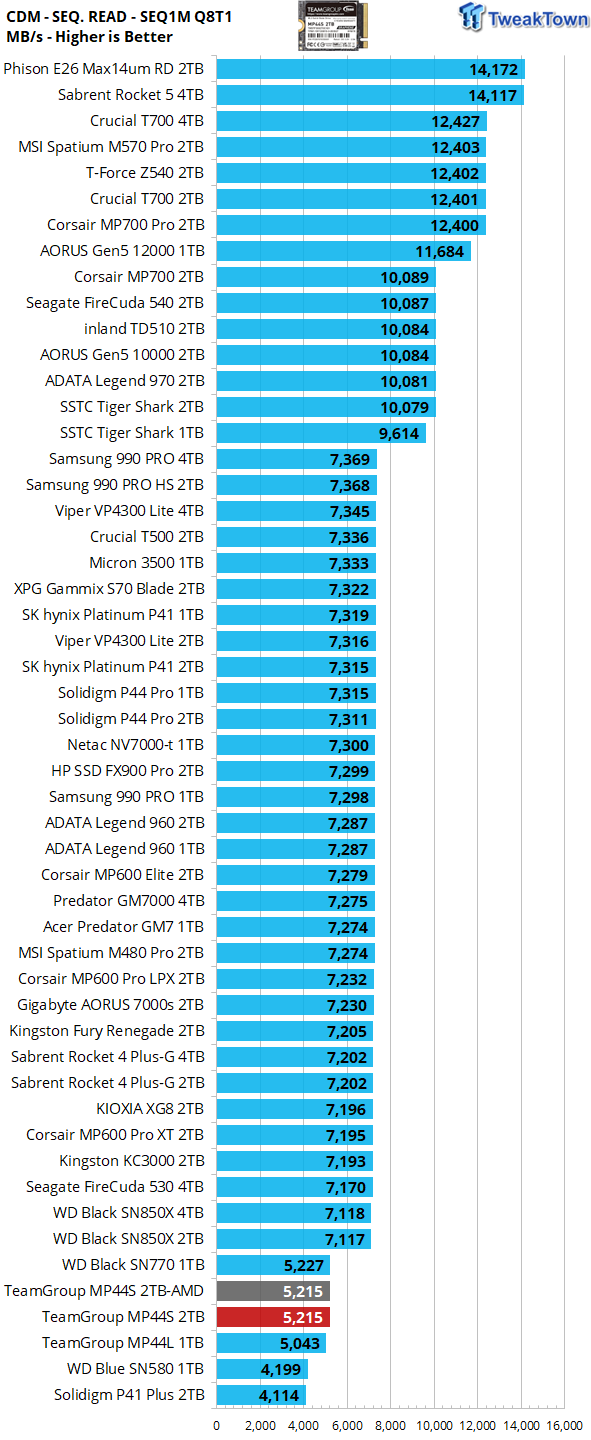
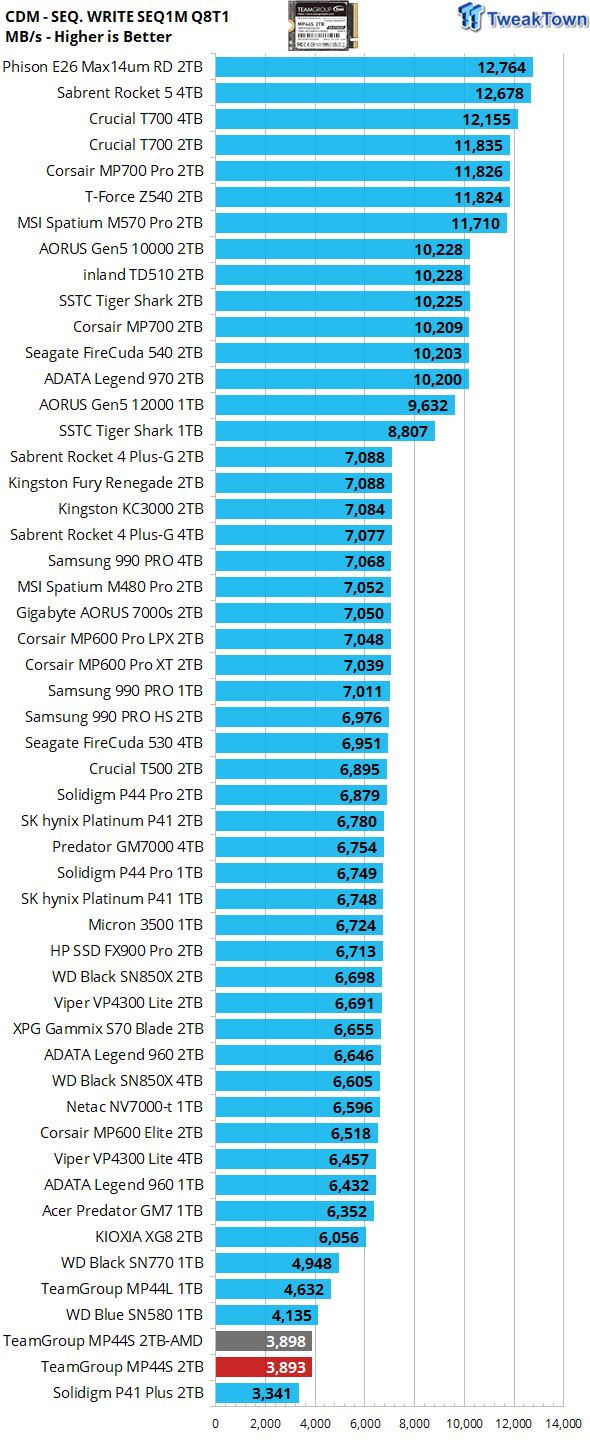
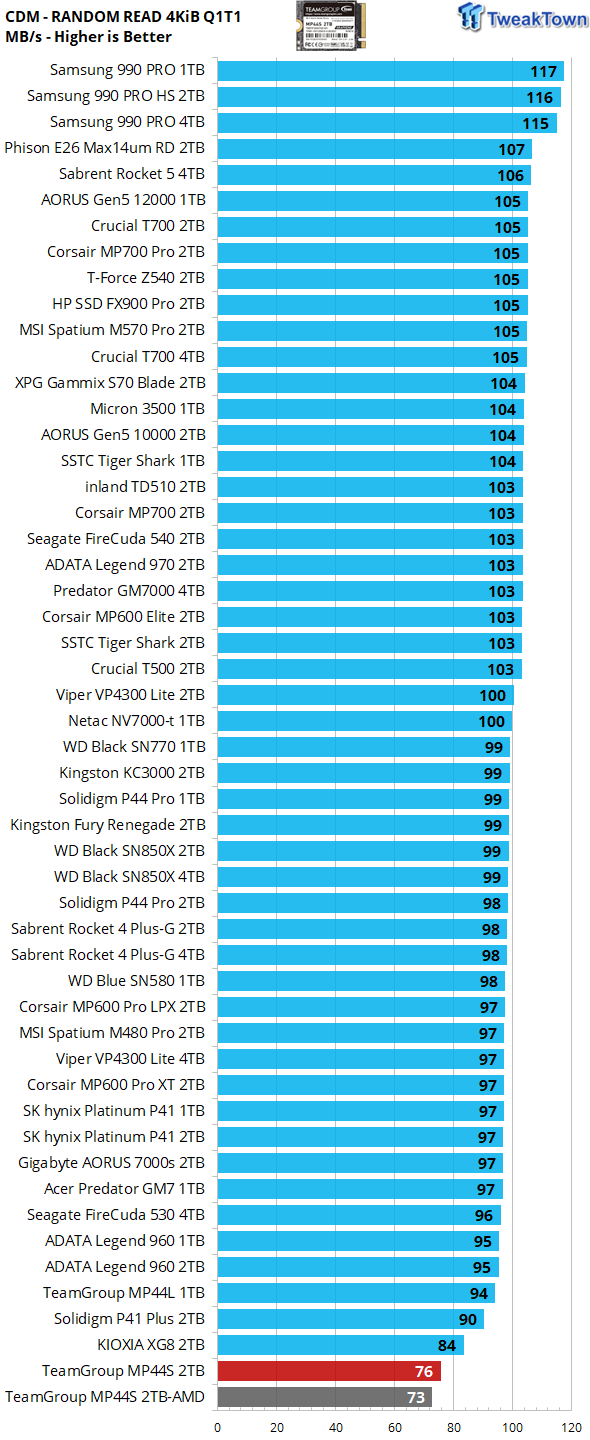
We employ CDM as our standard measurement for both sequential throughput and Q1T1 random read. In terms of sequential throughput, we find our test subject fully capable of meeting and exceeding quoted up to specifications. 200 MB/s more than the quoted sequential read and 400 MB/s more than the quoted sequential write. Q1T1 random read speed is the lowest on our chart, 20% lower than the E21T controlled MP44L, demonstrating in part the MP44S' size-induced lower power envelope we spoke of previously.
Anvil's Storage Utilities
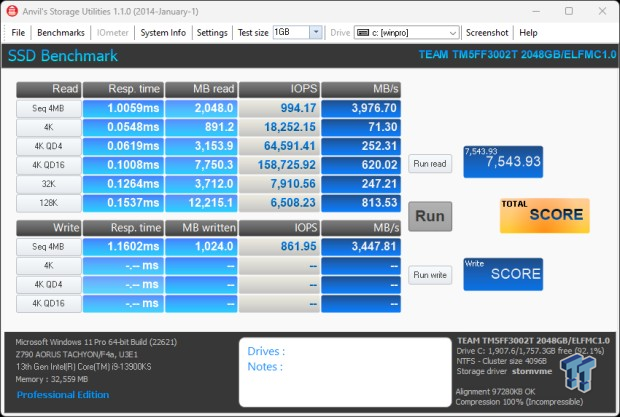
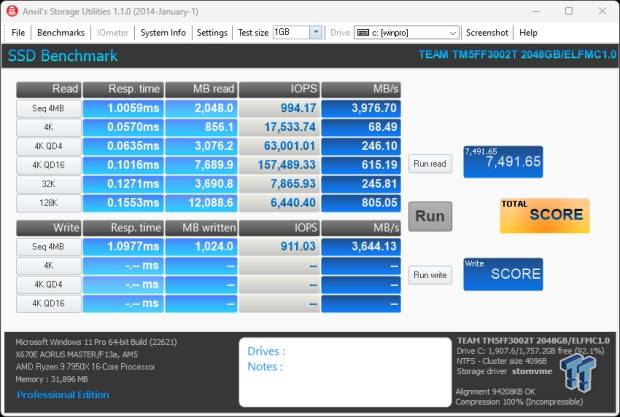
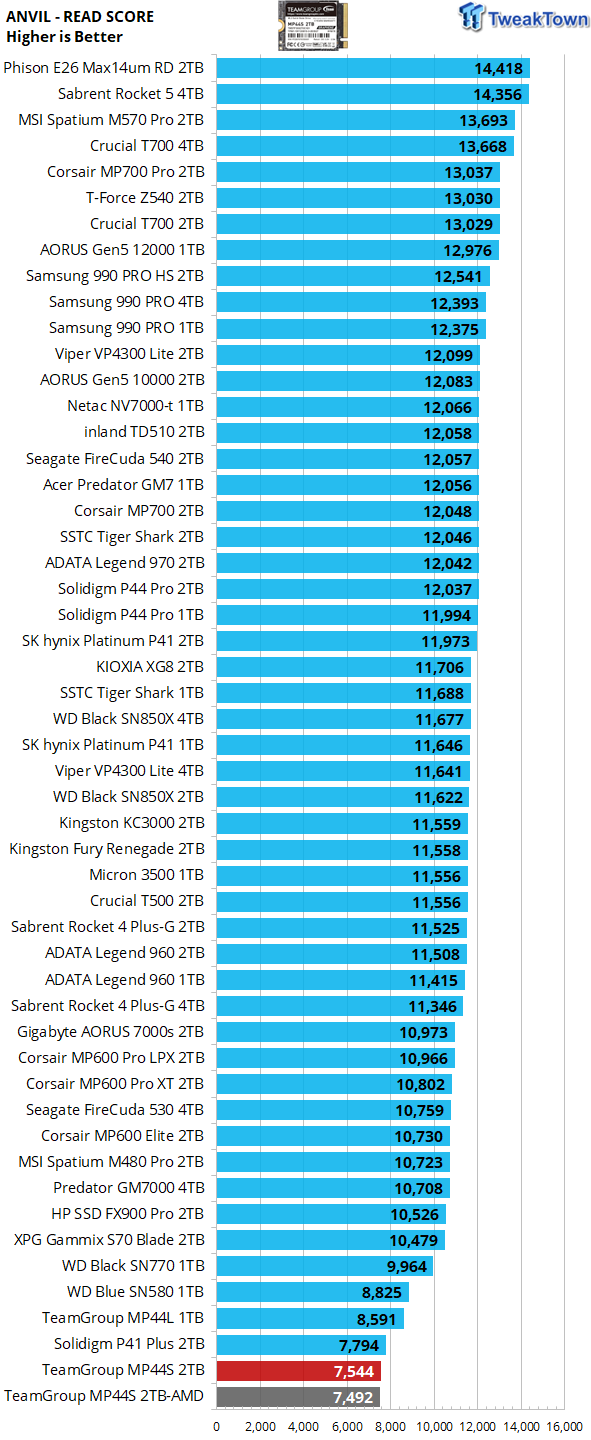
A read score of 7,500 is again indicative of the tuned-down firmware designed specifically for its intended device constraints.
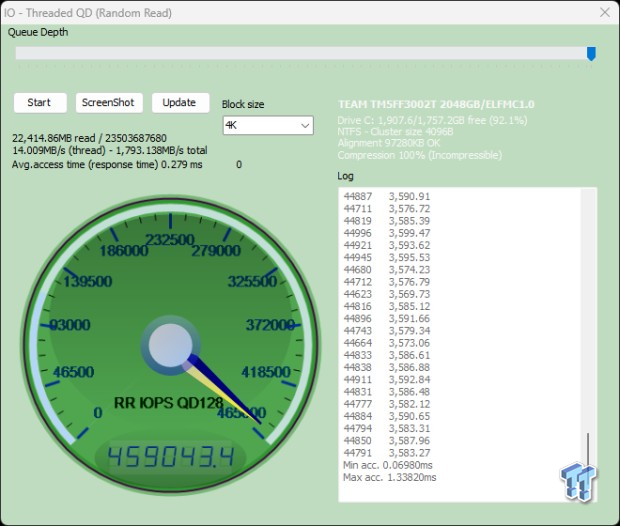
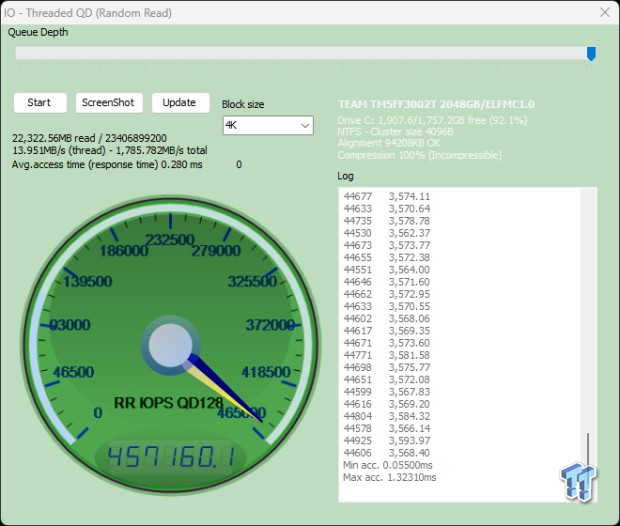
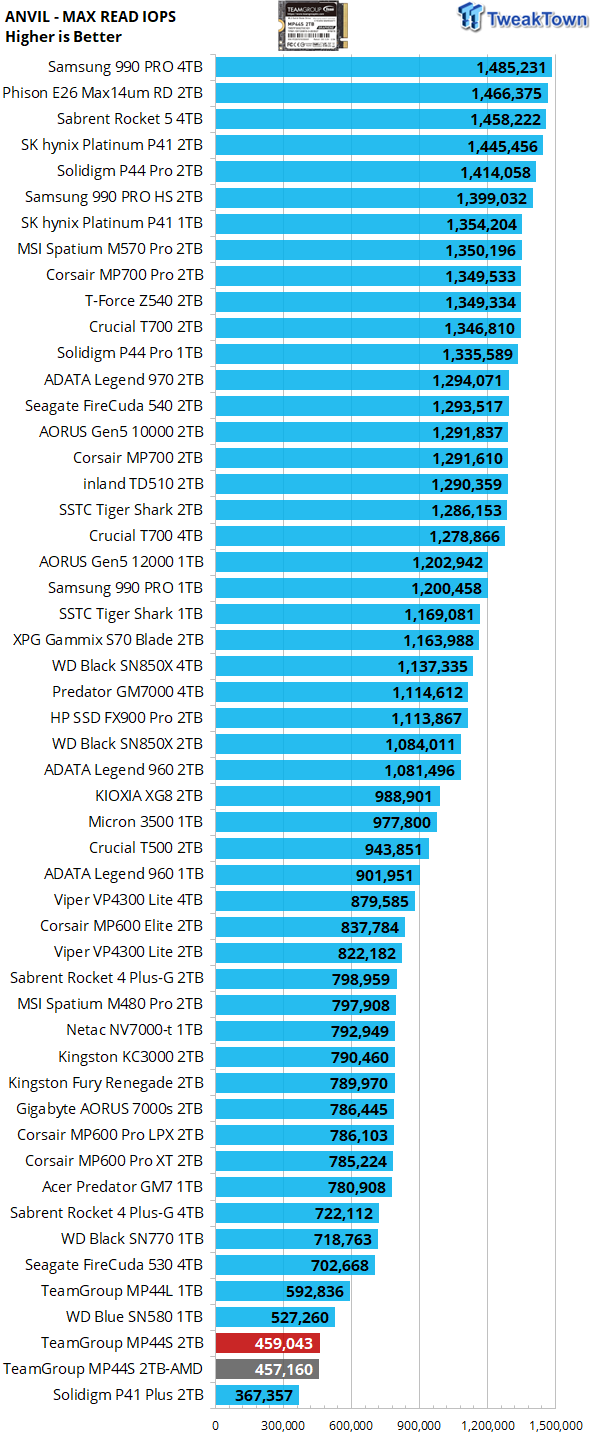
We employ Anvil's random read test as our standard for measuring max random read IOPS. This test is very accurate as it at its core is Iometer skinned over. We test at QD128. 459K IOPS is within striking range of its factory spec, even though we test under a far more demanding user state. Plenty good enough.
ATTO
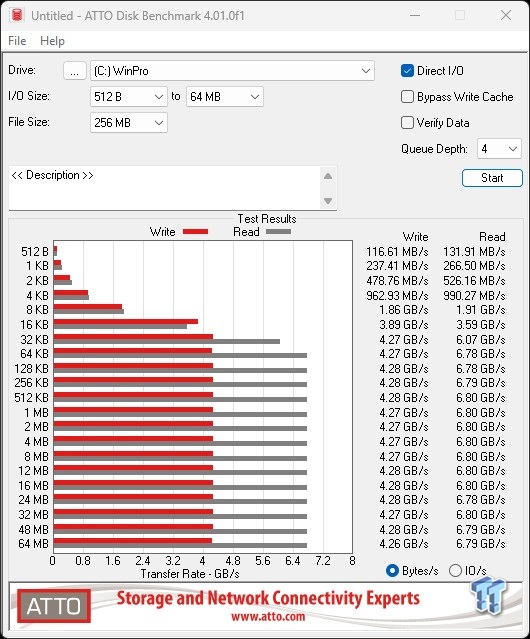

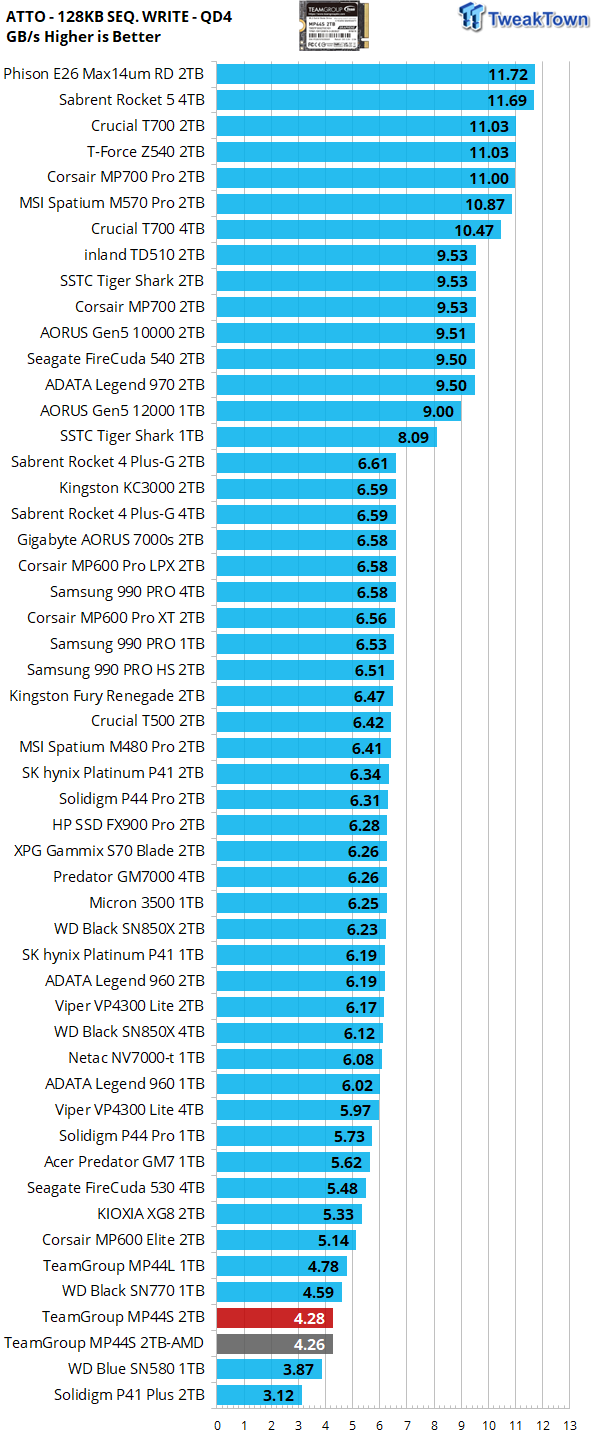
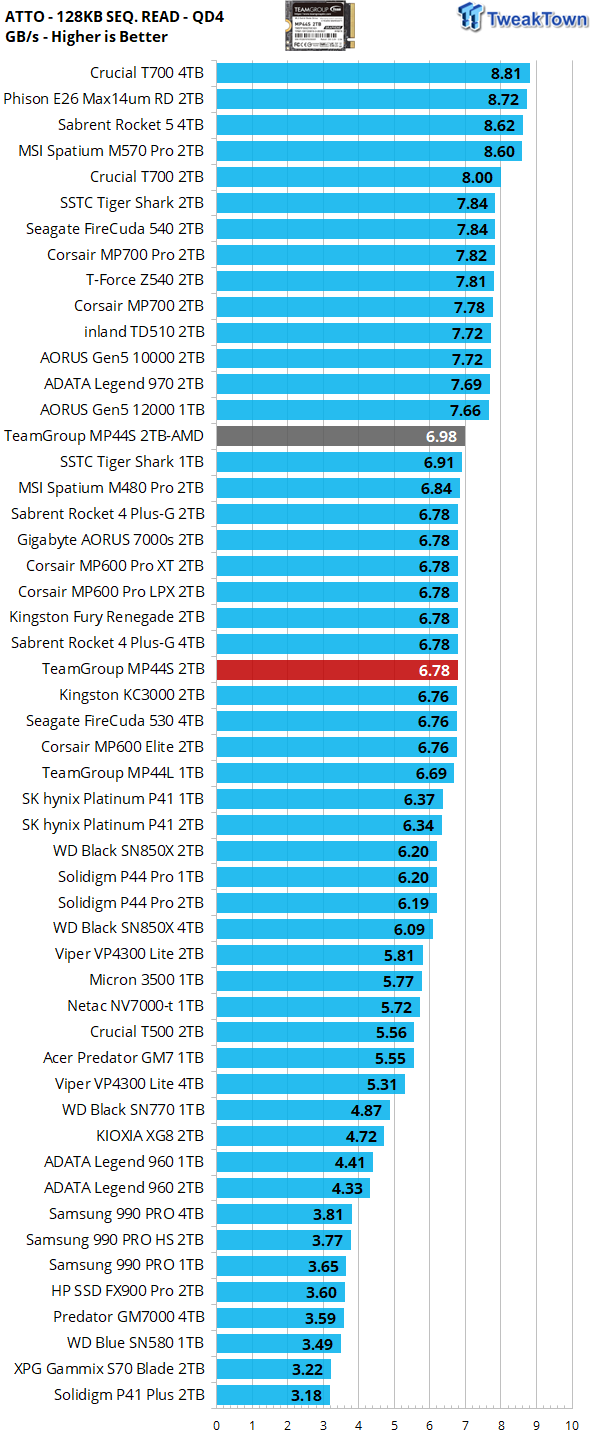
ATTO gives us a clear picture of what transfer sizes a particular SSD favors in terms of QD4 sequential throughput. We chart 128K transfers. At a queue depth of four, the TG MP44S favors sequential transfers of 64K or larger when serving data to the host (reading) and 64K or larger when programming (writing) data. The smaller the transfer size at full speed is what we want to see here, so we find this impressive. Additionally, we need to point out that the read speed here is much more than the drive can actually deliver. This is due to the way that Phison architected controllers handle reading fully compressible sequential data.
Real-World Testing: Transfers, 3DMark SSD Gaming Test, PCM10 Storage
Transfer Rates
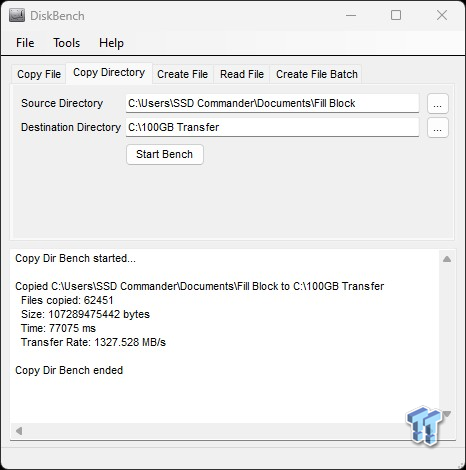
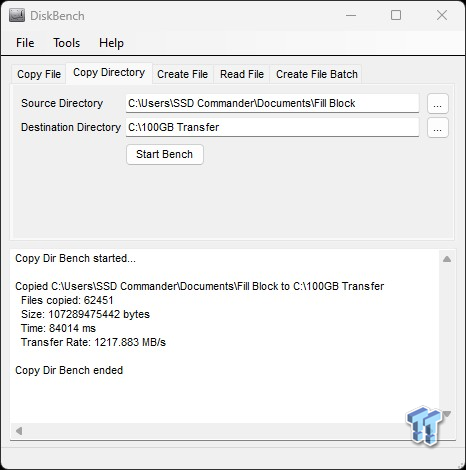
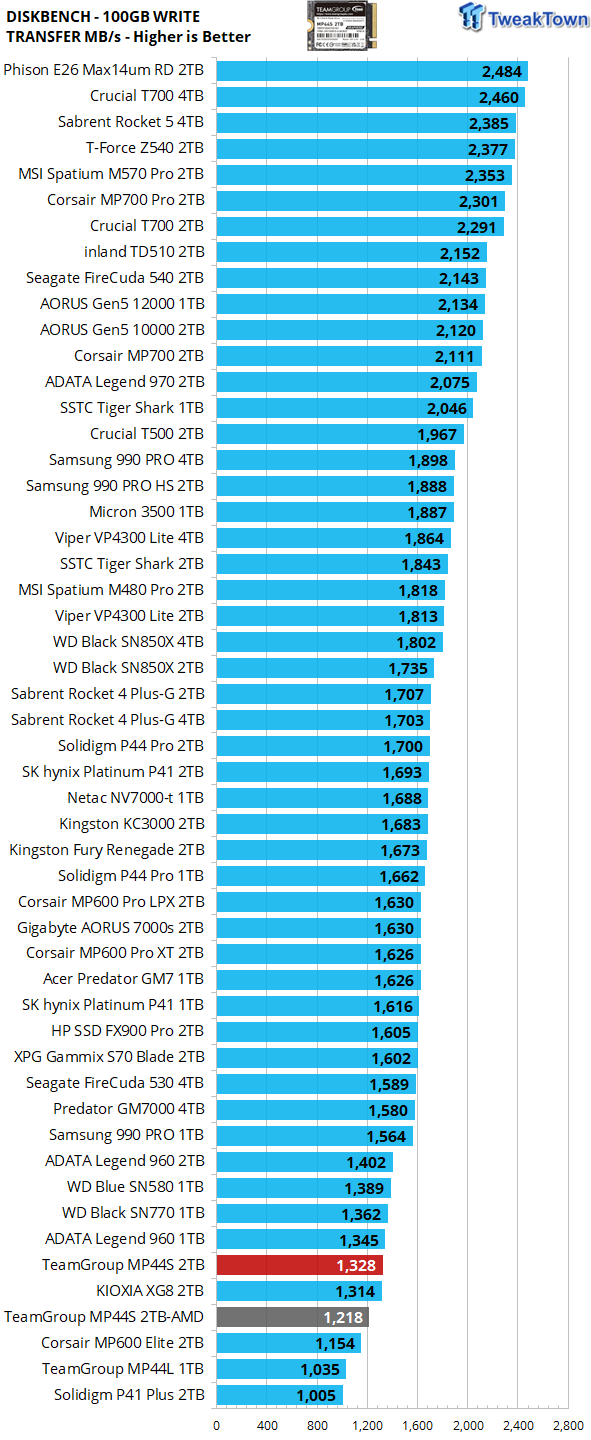
Our 100GB data transfer test is not your ordinary 100GB of data. Ours is a crushing mix composed of more than 62K files. Write performance, random or sequential, is an infrequent operation, and as such, we do not consider it to be an important performance metric in the consumer space. An example being how many times is a game installed vs. how many times it's played. If we compare our MP44S to the MP44L, we can see an instance where 4-word line QLC has the advantage over 2-word-line TLC.
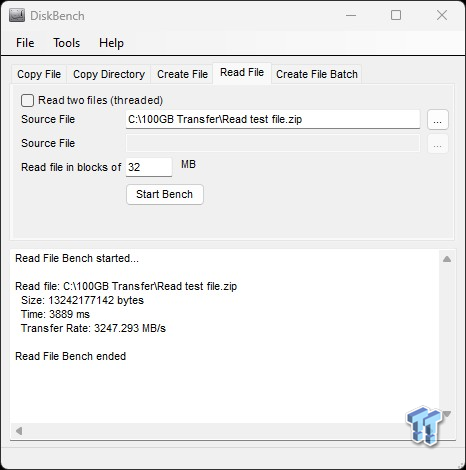
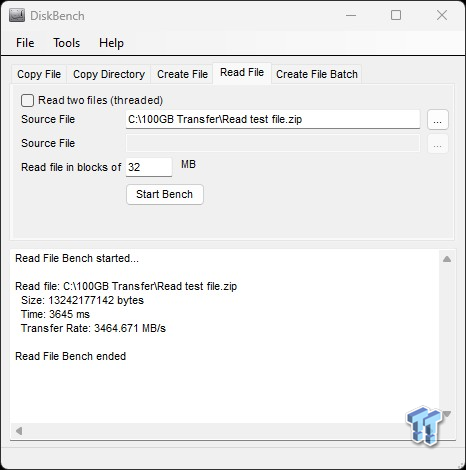
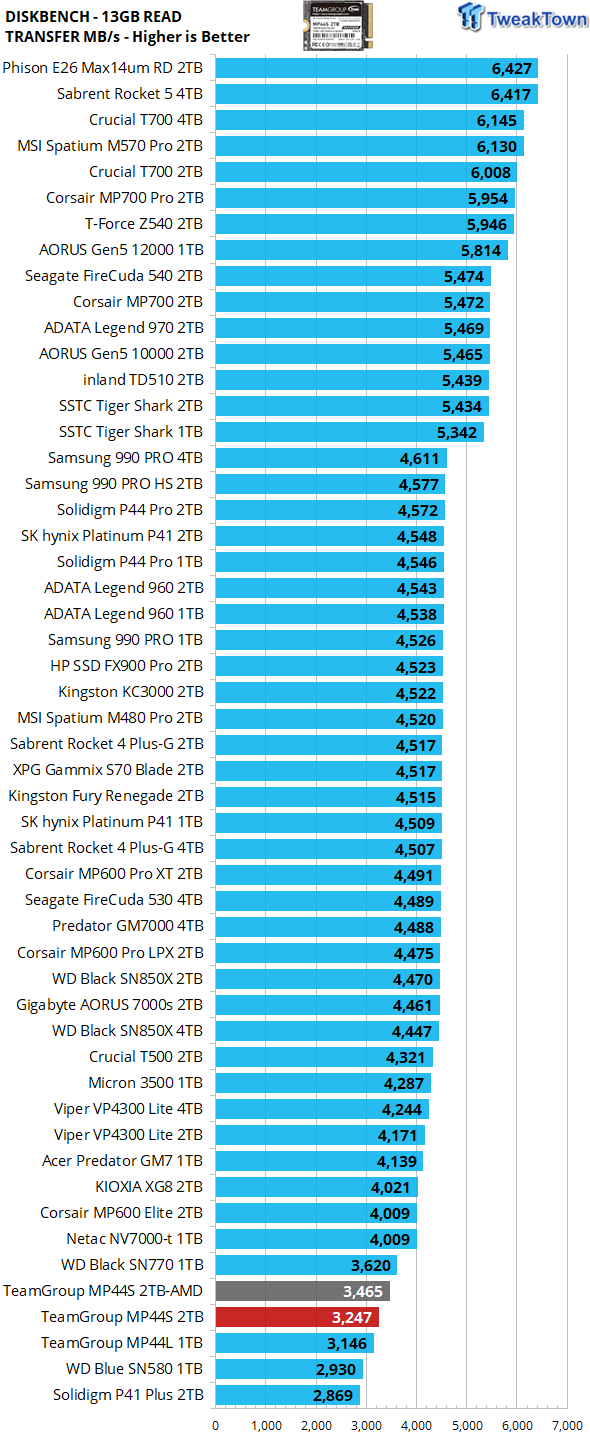
Unlike programming (writing) data, serving data to the host (reading) is always an important performance metric as it relates to the consumer space. Again, N48R has the advantage over B47R behind the same controller.
3DMark SSD Gaming Test
UL's newest 3DMark SSD Gaming Test is the most comprehensive SSD gaming test ever devised. We consider it superior to testing against games themselves because, as a trace, it is much more consistent than variations that will occur between runs on the actual game itself. This test is the same as running the actual game, just without the inconsistencies inherent to application testing. In short, we believe that this is the world's best way to test an SSD's gaming prowess and accurately compare it against competing SSDs. The 3DMark SSD Gaming Test measures and scores the following:
- Loading Battlefield V from launch to the main menu.
- Loading Call of Duty Black Ops 4 from launch to the main menu.
- Loading Overwatch from launch to the main menu.
- Recording a 1080p gameplay video at 60 FPS with OBS (Open Broadcaster Software) while playing Overwatch.
- Installing The Outer Worlds from the Epic Games Launcher.
- Saving game progress in The Outer Worlds.
- Copying the Steam folder for Counter-Strike Global Offensive from an external SSD to the system drive.
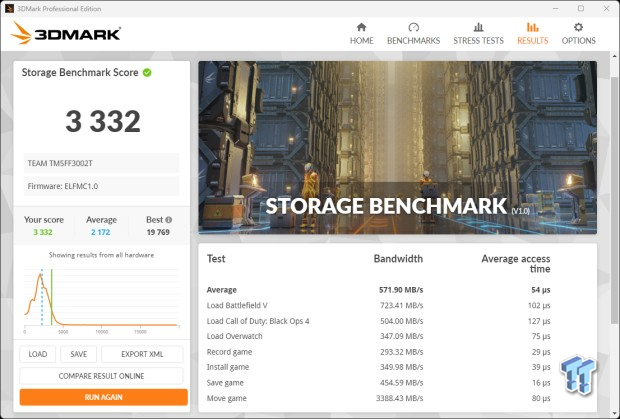

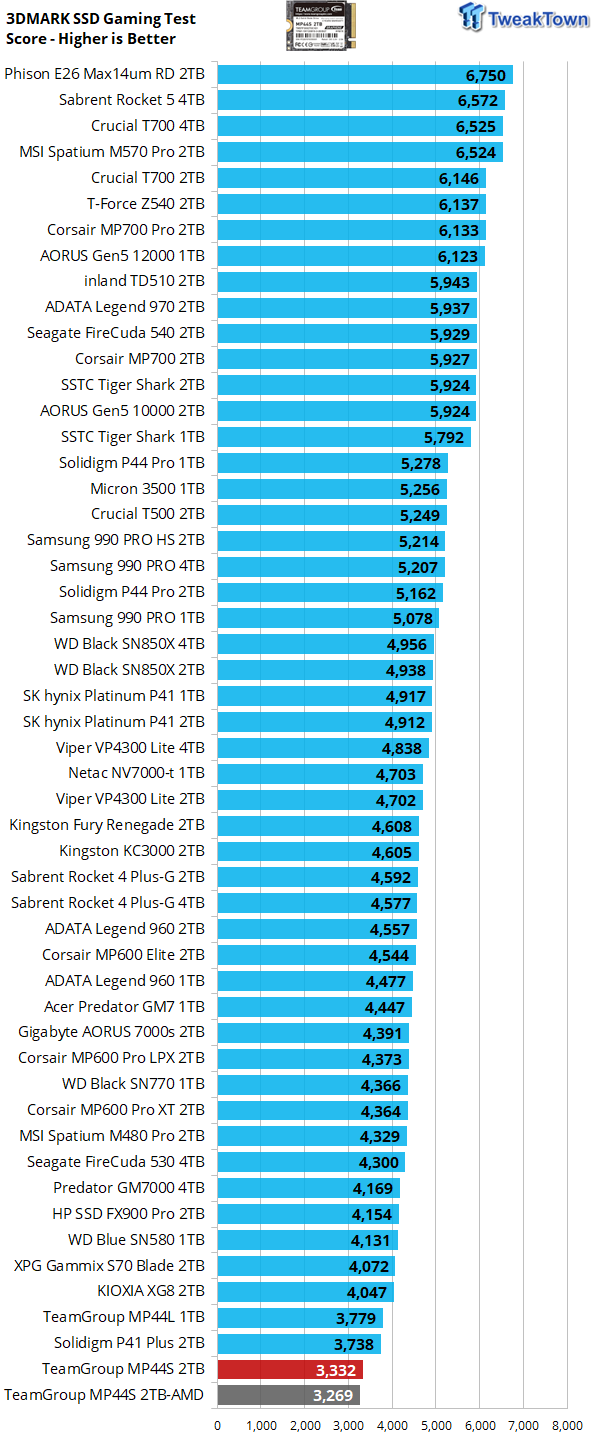
Gaming is a performance metric that matters to most DIY consumers, especially for the enthusiast crowd that TweakTown caters to. Now we've reached the point where results start to matter as they are a direct reflection of user experience. Right here is where QLC has always struggled, and the MP44S is no exception.
PCM10 Storage Tests
PCMark 10 Storage Test is the most advanced and most accurate real-world consumer storage test ever made. There are four different tests you can choose from; we run two of them. The Full System Drive Benchmark and the Quick System Drive Benchmark. The Full System Drive Benchmark writes 204 GB of data over the duration of the test. These tests directly correlate with mainstream user experience.
PCMark 10 Full System Drive Benchmark
This test writes 204GB data and covers a broad range of common consumer tasks, including booting Windows 10, file transfers, Adobe and Office applications, and startup times for games including Battlefield V, COD Black Ops 4, and Overwatch. Unlike synthetic numbers, this is comprehensive real-world data, which is why we use it to rank SSDs in terms of user experience.
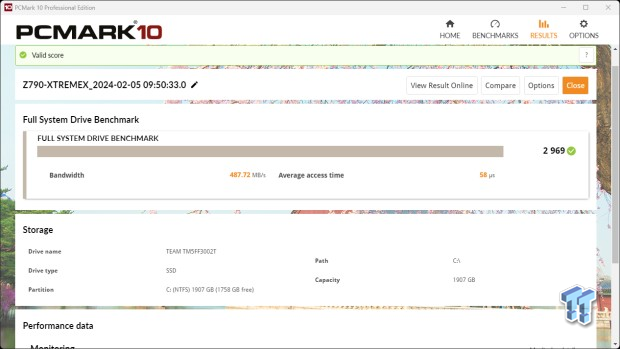
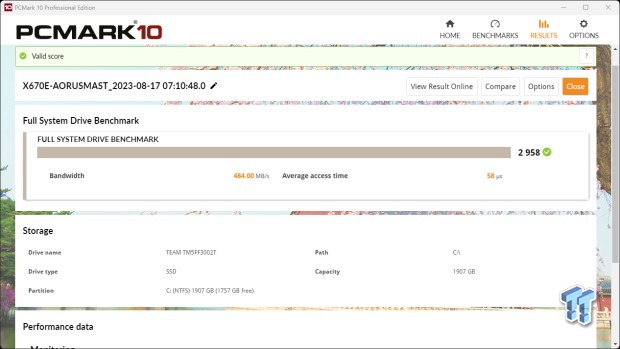
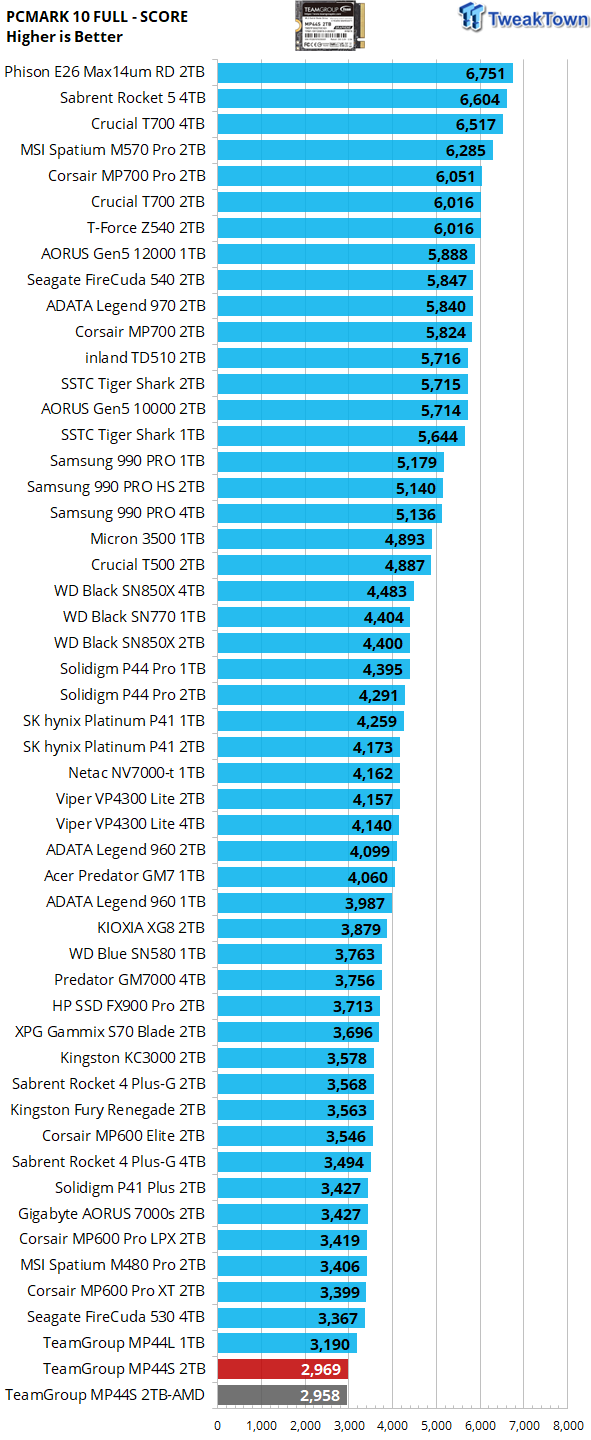
Despite its much more restricted power envelope, the MP44S manages to hang in there with the TLC-arrayed MP44L and does so impressively with heavy consumer workloads.
PCMark 10 Quick System Drive Benchmark
The Quick System Drive Benchmark writes 23 GB of data over the duration of the test.
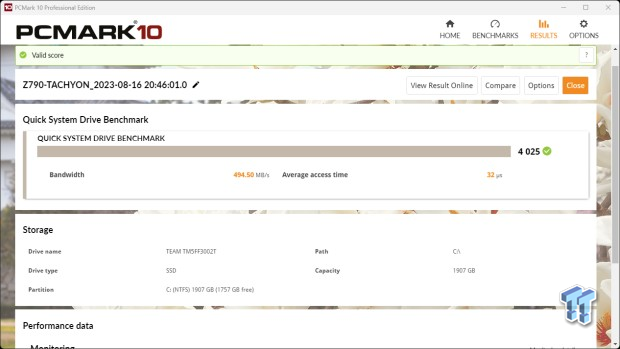
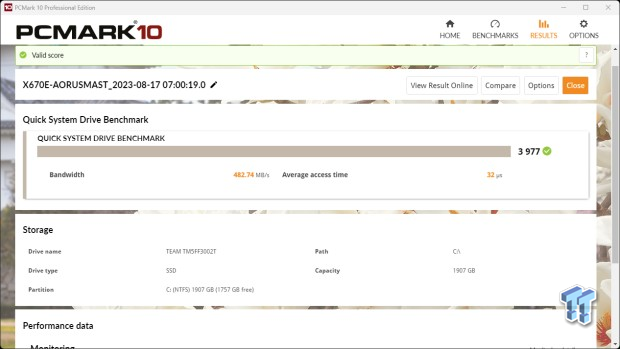
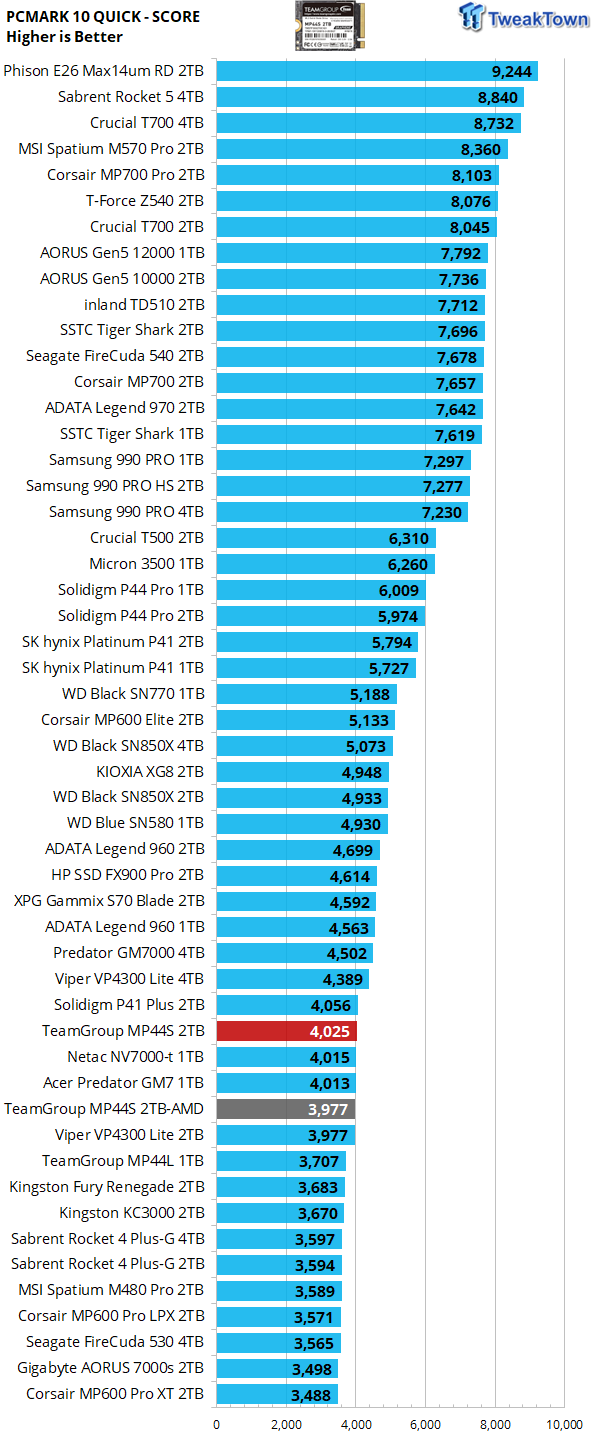
This is performance that matters as it is highly reflective of normal consumer data patterns. Here, we see the MP44S shining brightly, delivering more than a whole host of SSDs that are considerably faster on average. It is impressive and a perfect example of when QLC can beat TLC.
Final Thoughts
Although as the only 2230 SSD in our test pool, the MP44S lands at the bottom of most of our charts, this is exactly as expected for what this drive is. As we see it, this tiny but expansive 2TB SSD is the perfect balance of performance and efficiency for its intended handheld PC applications.
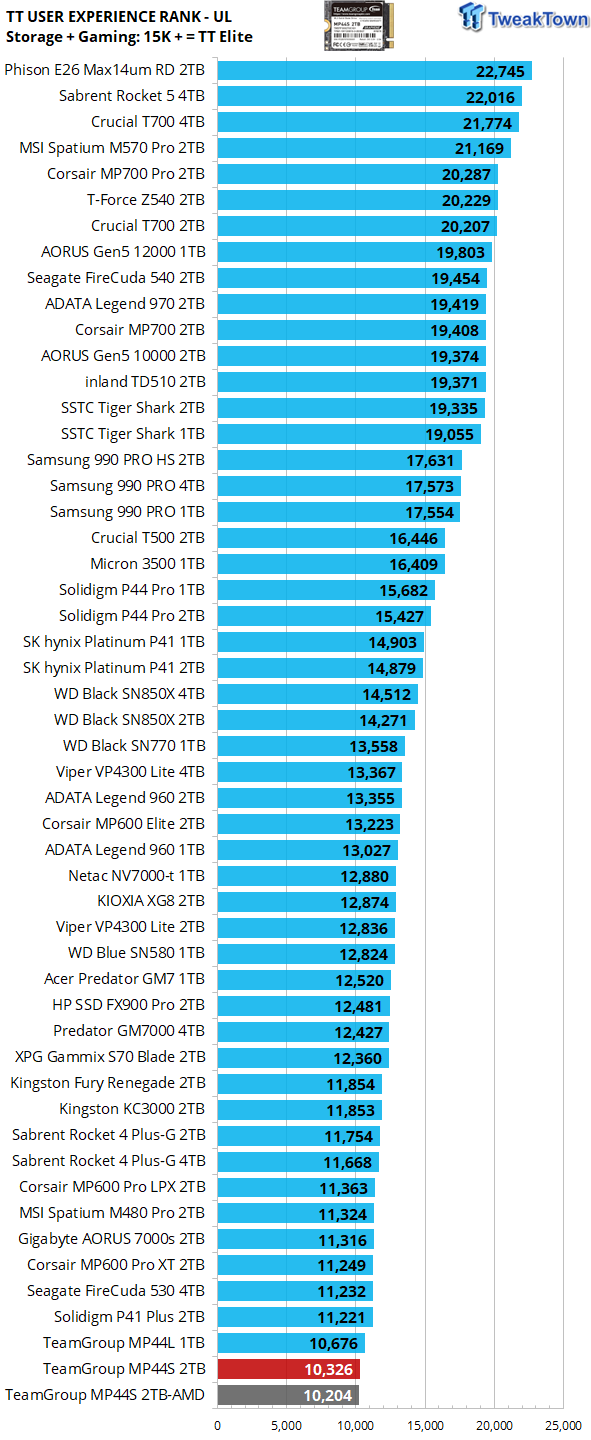
We rank SSDs in terms of overall user experience (performance where it matters most) as expressed by PCMark 10 storage and 3DMark gaming storage tests. Currently, we consider a user experience score of 15K or more to verify an SSD as a TweakTown Elite performer.
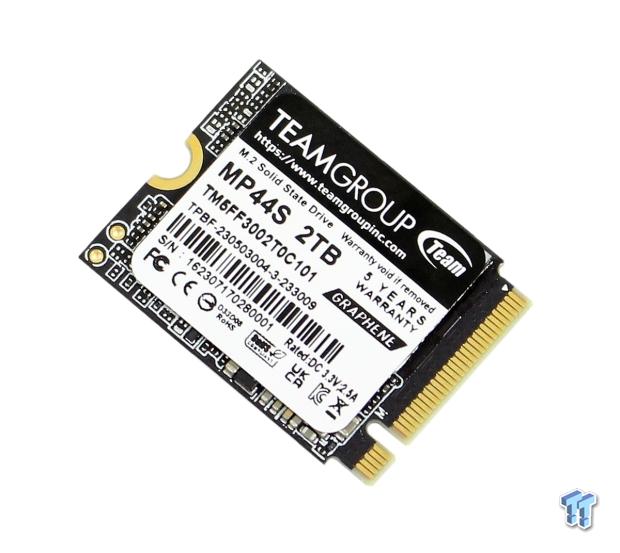
If you are looking for some legit storage expansion for your ROG Ally or Steam Deck, we are of the opinion that you can't do any better than the 2TB TeamGroup MP44S.

